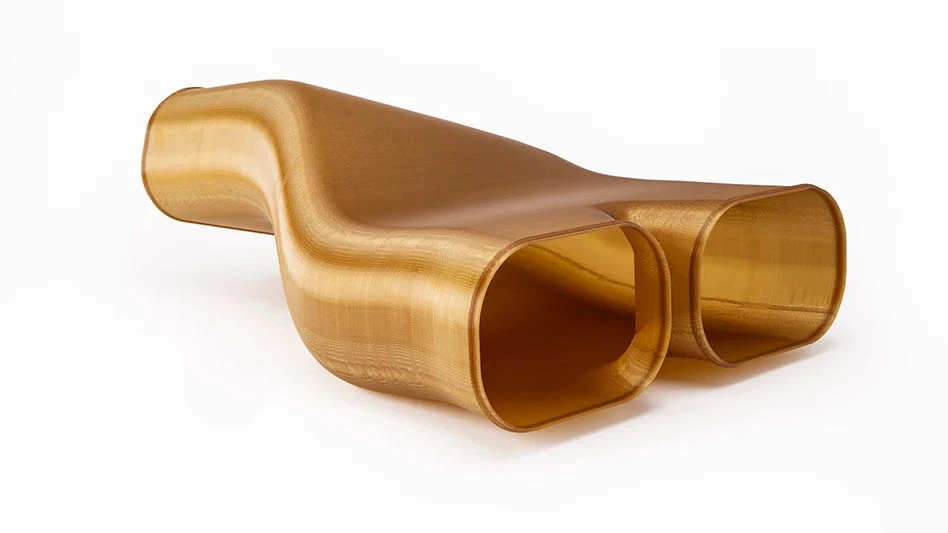
A manufacturer might have any number of reasons to look for outside programming help. The engineering department is overloaded. A new 5-axis machining center or multitasking lathe just hit the floor and the programming team is scratching their heads, wondering where to start. Or perhaps the workpiece is worth tens of thousands of dollars, and some expert advice is needed on how to process it most efficiently. This last situation is common for many aerospace shops, especially when combined with the second scenario – the increasing prevalence of highly sophisticated CNC machine tools that many programmers are still struggling to master.
Risk avoidance
Dale Fry knows all about it. Three years ago, he decided he’d had enough of the daily machine shop grind and opened Southern Programming Application Contract Engineering (SPACE). He’s been busy ever since. “I’ve been in the business for 30 years now,” he says. “When I started out, I moved from company to company across the United States, learning all I could from each one. And when I came here to Alabama, I decided it was time to start programming for myself.”
Most of Fry’s work is from clients in the aerospace industry, and most of that is programming 5-axis machining centers. Despite this common theme, he’s noticed every shop does things differently. Various brands and styles of cutting tools, different toolholders and workholding methods, and especially different approaches to metal removal, all of which require Fry to work closely with his customers to understand each one’s unique manufacturing processes.
Yet there’s one tool that has consistently leveled the playing field, assuring Fry and his clients that a programming error won’t inadvertently crash a costly machine tool: Vericut toolpath simulation and optimization software from CGTech Inc. in Irvine, California.
“I’ve used Vericut during the past 20 years or so at different companies, so when I opened my own business, and my first customer sent me a Vericut file, I knew it would continue to play an important role in my work,” Fry says. “In fact, I’ve turned down jobs from potential clients just because they don’t use Vericut.”

In addition to his previous shop experience, Fry now works with dozens of manufacturers; he’s seen the good, the bad, and the just plain ugly. When asked about common mistakes and what advice he would give to shops hoping to improve their operations, his response was hardly surprising: get Vericut.
“I have a well-known, very high-end CAM system, but it’s not all that great at toolpath simulation,” Fry says. “For one thing, it’s too cumbersome, but more importantly, it doesn’t provide all of the critical information that Vericut has to offer. The stakes are just too high for me not to use Vericut.”

Seeing clearly
Bruce Roth of Clearwater, Kansas, has had a similar experience. Like Fry, he’s been a Vericut user since opening the doors of his contract programming firm, Superior Programming, 25 years ago. Roth has since done work for numerous consulting firms and direct customers, most of it in the aerospace field and, again, most of it 5-axis programming. He and Fry even use the same brand of CAM software, although Roth’s biggest complaint is that it doesn’t offer the same level of technical data as Vericut.
“I’ve been working full-time with Advanced Plastics and Machining in Owasso, Oklahoma, for the past year and a half, and was actually brought on to help them implement that CAM software, along with Vericut,” Roth explains. “Both are excellent systems, but we’re cutting a lot of titanium here, and it’s critical to maintain constant cutter loads, something Vericut does quite well. It lets you know, for example, when you plowed into a corner, which would either cause a bunch of chatter or even break the cutter. By watching the load graphs, it’s pretty easy to catch stuff like that.”
Despite his extensive programming experience, Roth admittedly makes mistakes and Vericut finds them. Aside from the overload situation described, there are collisions, over-travels, and post-processing errors of concern, all of which are clearly visible in Vericut. This allows Roth and the others at Advanced to correct such problems before they hit the production floor.
Aside from agreeing with Fry’s advice to use Vericut, Roth has several additional recommendations to anyone interested in continuous improvement, starting with re-evaluating their current methodology.
“If you’re one of those people who says ‘Well, we’ve been doing it this way for the past 30 years and it’s been working,’ you need to break out of that rut,” Roth says. “There’ve been so many advances in manufacturing technology during the past decade or so, from workholding and cutting tools to advanced toolpaths and machine simulation. The cost and productivity benefits of each are pretty dramatic. Grabbing hold of them is just a matter of setting aside the status quo and taking the next step forward.”

Explore the November December 2021 Issue
Check out more from this issue and find your next story to read.
Latest from Aerospace Manufacturing and Design
- Bell awarded funding for X-plane build phase of SPRINT program
- Shaft coupling clamps
- #46 Lunch + Learn Podcast with SMW Autoblok
- Gleason Corp. acquires the Intra Group of Companies
- Thread milling cutter reduces cutting pressure, vibration
- Malaysia Aviation Group orders 20 more Airbus A330neo widebodies
- More displacement from space-tested piezo actuators
- Textron Aviation to bring its largest-ever lineup to 2025 EAA AirVenture





